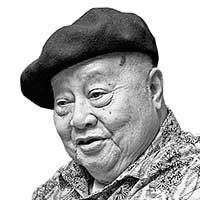The Filipino sound

Ryan Cayabyab, National Artist for music and 2019 Ramon Magsaysay Awardee, asked in a recent essay the question, where is the Filipino in Filipino songs? The question of identity is a very important question, not only for music and for art as a whole but also for that musical composition, that novel, that painting – for any work of art.
Among those of us who write, that question should also always be in our minds.
As I have stated all too often, the two great religions of Asia, Hinduism and Buddhism, did not take root on Philippine soil. And had the Spaniards come later with their Catholicism, we would have been Islamized. We are Christians and, therefore, heirs to the Christian and Western tradition. This is the historical core of our identity, which we cannot change but which we can exploit in our arts.
Although we are very much in Asia, our music is distinctly Western. Almost every town has a brass band which plays western music in almost all social occasions, so we grow up very familiar with western melodies.
Hinduism and Buddhism brought to Asia classical art forms although, of course, in those countries that embraced these two religions, folk art forms exist.
Many Filipinos today cannot distinguish folk art from classical art. Sometimes, though, the distinctions are blurred for the simple reason that some folk art forms take on the features of classical art — they have become more sophisticated and more difficult to perform.
The major distinction between classical art and folk art is precisely this — folk art doesn’t require much expertise. Take Tinikling, for instance, five minutes and one knows how to do it. However, the classical Bharatanatyam of India and the Legong of Bali take years to master.
But folk art forms are very useful to the creative artist, composer, musician. They belong to the people and are the most basic of art forms and the basis of any art work, which then acquires a definitive character, reflecting as it does the culture of a people.
When Edru Abraham, for instance, gathered his UP students to give melody to native musical instruments like drums, gongs, and bamboo flutes, he elevated folk music and showed Filipino composers the creative possibilities for folk instruments.
The return to nativism is perhaps necessary, but only if we recognize that nativism is hardly what most Filipinos appreciate. For instance, our foremost musicologist, Jose Maceda, was a splendid scholar steeped in the native musical tradition. But as a composer he failed to appreciate his western background; instead he attempted to be ultra-modern and avant garde.
How much better if our composers included the native themes of our folk songs in compositions aligned with our Western heritage?
This is what several European composers have done, and what some European writers have done with their folk literature.
Indeed, there is so much that can be extracted from our native themes. Nick Joaquin and I have done this with our writing. Although we write in English, precisely because the themes are Filipino, and we write about Filipino reality in a manner that is appreciated universally.
Our singers like the late Jovita Fuentes who sang Madame Butterfly in world capitals, and Lea Salonga, who has starred in Broadway, are examples of how we have mastered the western idiom. Now comes Freddie Aguilar whose Anak took the world by storm. Maybe it is time that we ask how he did it, and realize that, indeed, there is something hauntingly Filipino in his music.
Way back in the 1950s and 1960s, when there were Filipino big bands playing in the nightclubs of major Japanese cities, I used to drop by the Tokyo nightclubs and, with eyes closed, listened to the music. I could immediately conclude when it was a Filipino band playing. The Japanese played neatly, every note in place. The Filipino bands were not that precise but their music was full-bodied, with heart. This is the Filipino sound which was heard in major Asian capitals long before World War II, all the way to Turkey for the Filipino musicians then were part of the early Filipino diaspora.
Our brilliant singers Lea Salonga, Celeste Legaspi, and Dulce would have make a splendid trio and, with Filipino compositions, be like the Supremes who popularized black melodies, or much earlier, the Andrews Sisters. Singly, they could give their music a distinct national identity, like Miriam Makeba of South Africa and Edith Piaf of France.
All these are ancient examples. Among the present crop of musicians and composers, there are those like Ryan Cayabyab who are doing something about making the Filipino sound heard not only in these shores but also beyond.
As they are, a lot of the Ilokano folk songs I learned in my youth are memorable, and our kundiman, such as the classic Bayan Ko are world class. In the more modern idiom, the songs of George Canseco and Willy Cruz can compare with the best songs in the west or anywhere.
We can see from TV how popular musical contests are. Indeed, we are a very musical people. I hope that in the future, there will be more Freddie Aguilars, and more than that, there will be a group of Filipino singers, global like Sweden’s Abba, who used themes from Swedish folk songs.
Once, my kids played new music that reminded of kundiman. I asked them if it was Filipino. They said it was one of the records I had brought back from Moscow.
Indeed, there is also a great similarity between Russian and Filipino music, except that the Russians have composers like Tchaikovsky and Shostakovich, the likes of which we still have to have.
But I am sure Ryan and the Filipino songwriters and musical artists he is inspiring are working hard to make and promote a distinctively beautiful and unique Filipino sound.
- Latest
- Trending



























